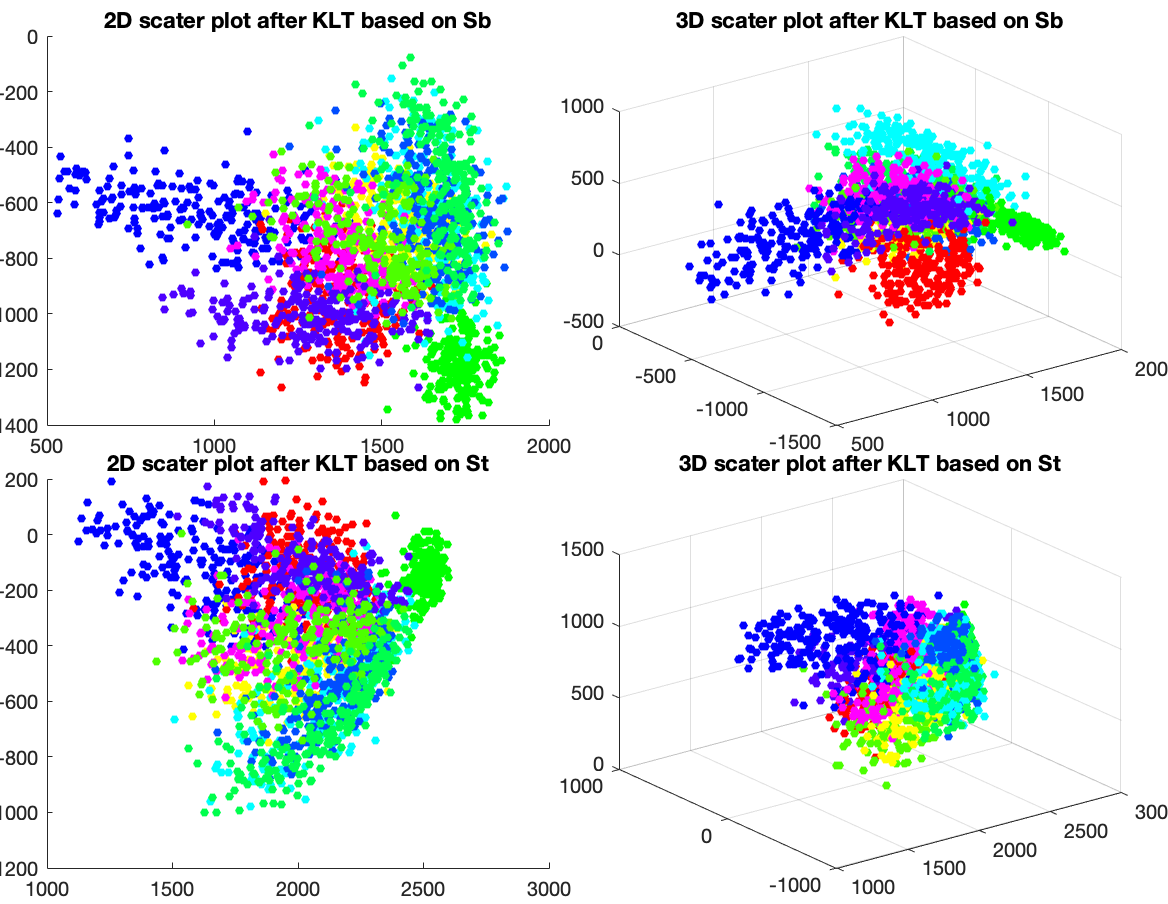Next: Kernel Methods Up: Principal Component Analysis Previous: Comparison with Other Orthogonal
The KLT can be applied to a set of 




 -dimensional vector
-dimensional vector  can be formed by all
can be formed by all  pixels (by concatenating the rows or columns) of each of the
pixels (by concatenating the rows or columns) of each of the  images. These
images. These  vectors each for one of the
vectors each for one of the  images are represented
by a
images are represented
by a  data array
data array
![${\bf X}=[{\bf x}_1,\cdots,{\bf x}_N]$](img6.svg) , and
treated as the samples of a K-dimensional random vector
, and
treated as the samples of a K-dimensional random vector  , its
covariance matrix can be estimated (assuming with zero mean) as:
, its
covariance matrix can be estimated (assuming with zero mean) as:
![$\displaystyle {\bf\Sigma}=\frac{1}{N} \sum_{n=1}^N{\bf x}_n{\bf x}_n^T
=\frac{1...
...N^T\end{array}\right]
=\frac{1}{N} \left( {\bf X} {\bf X}^T \right)_{K\times K}$](img327.svg) |
(86) |
 -dimensional vector can be formed by the pixels at the same
position (in the
-dimensional vector can be formed by the pixels at the same
position (in the  th row and
th row and  th column of the image array) from
all
th column of the image array) from
all  images. There are
images. There are  such vectors each for one of the
such vectors each for one of the  pixels in the images. These vectors are the rows of the
pixels in the images. These vectors are the rows of the  defined above, or the columns of
defined above, or the columns of  . The covariance matrix
of these
. The covariance matrix
of these  dimensional vectors can be estimated as:
dimensional vectors can be estimated as:
 |
(87) |
As shown previously, these two different covariance matrices share
the same eigenvalues. The eigenequations for




 |
(88) |
 on both sides of the second equation we get
on both sides of the second equation we get
![$\displaystyle {\bf X}^T{\bf X} [{\bf X}^T{\bf u}]=\mu [{\bf X}^T{\bf u}].$](img335.svg) |
(89) |
 and eigenvector
and eigenvector
 when normalized. The two covariance
matrices
when normalized. The two covariance
matrices
 and
and
 have the same rank
have the same rank
 (if
(if  is not degenerate) and therefore the same number of non-zero eigenvalues.
Consequently, the KLT can be carried out based on either matrix with the same
effects in terms of the signal decorrelation and energy compaction. As the number
of pixels in the image is typically much greater than the number of images,
is not degenerate) and therefore the same number of non-zero eigenvalues.
Consequently, the KLT can be carried out based on either matrix with the same
effects in terms of the signal decorrelation and energy compaction. As the number
of pixels in the image is typically much greater than the number of images,
 , we will take the second approach above to treat the pixels in the same
position in all
, we will take the second approach above to treat the pixels in the same
position in all  images as a sample of an
images as a sample of an  -dimensional random signal vector and
carry out the KLT based on the
-dimensional random signal vector and
carry out the KLT based on the  covariance matrix
covariance matrix
 .
.
We can now carry out the KLT to each of the 








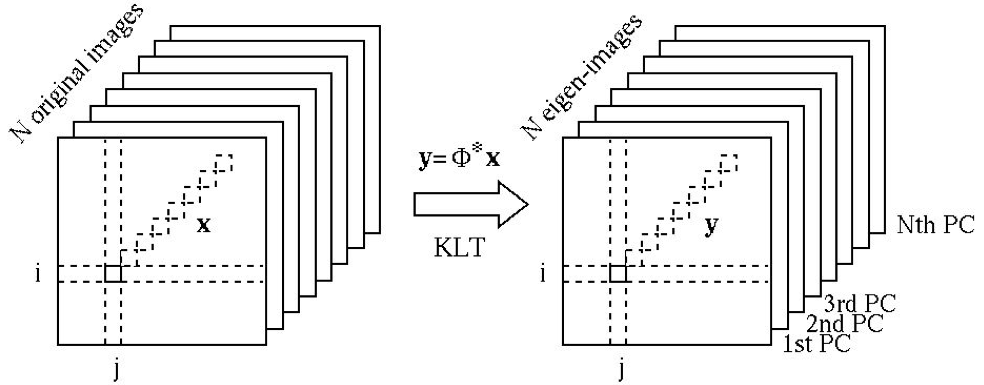
We now consider some of such applications.
In remote sensing, images of the surface of either the Earth or other
planets such as Mars are taken by a multispectral camera system on board
satellite, for various studies (e.g., geology, geography, etc.). The camera
system has an array of 
These sensors will produce a set of 



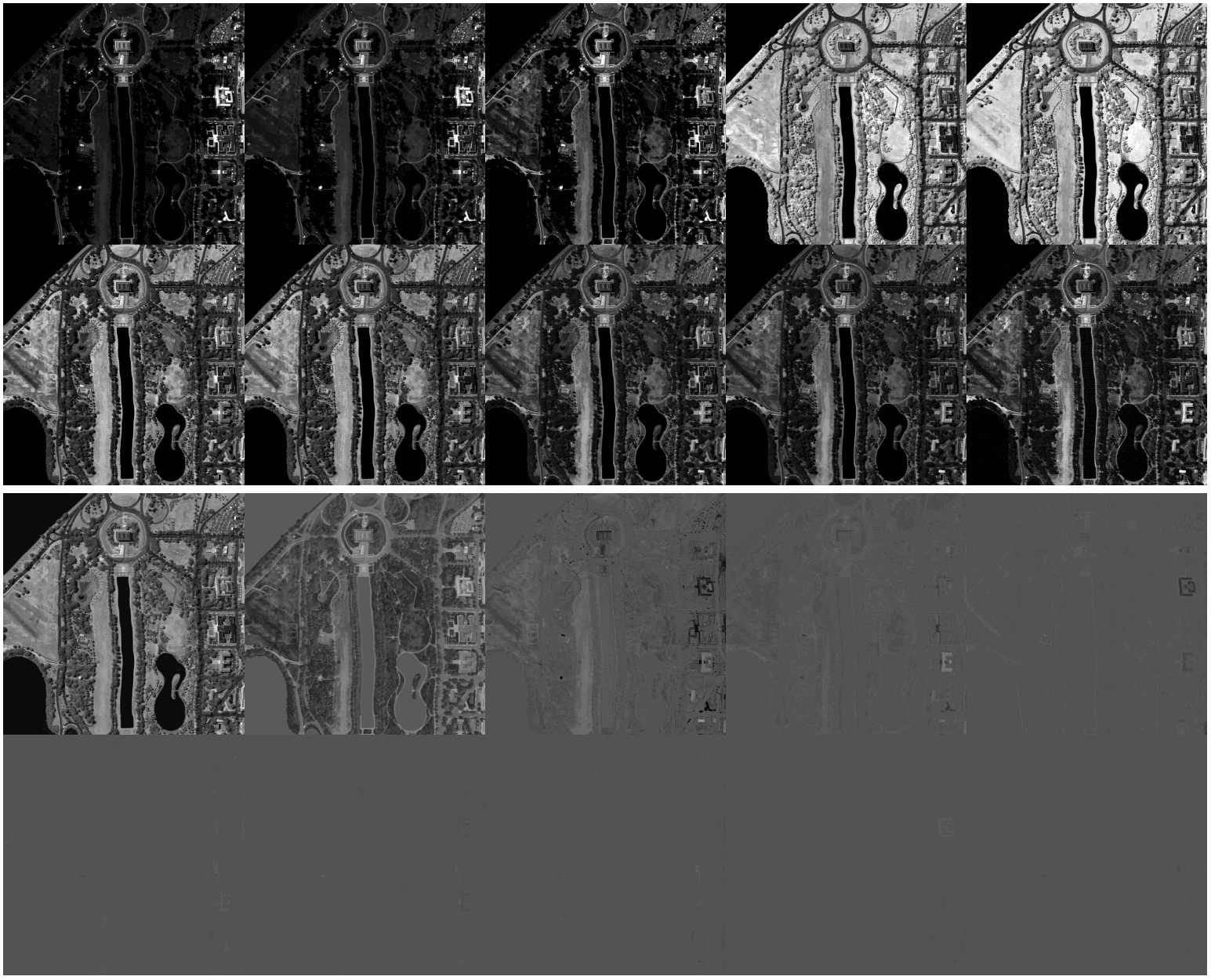
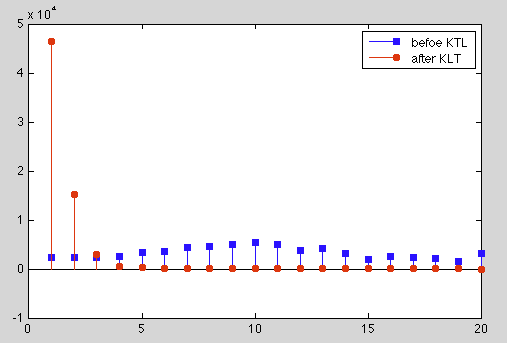
A sequence of 
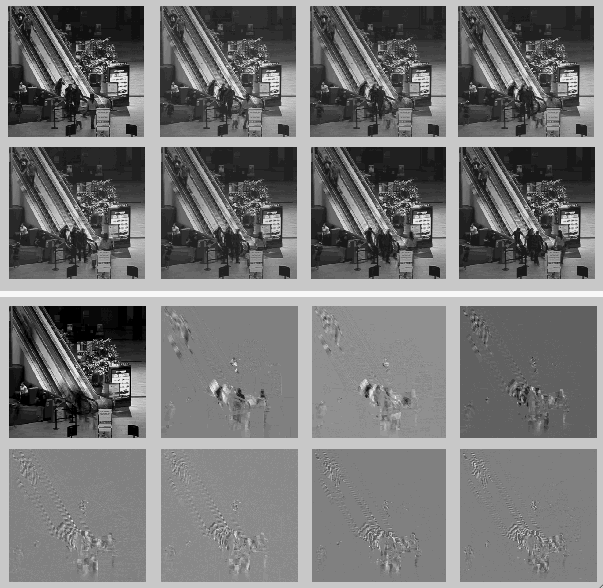
It is interesting to observe that the first eigen-image corresponding to the greatest eigenvalue (left panel of the third row of the figure) represents mostly the static scene of the image frames representing the main variations in the image (carrying most of the energy), while the subsequent eigen-images represent mostly the motion in the video, the variation between the frames. For example, the motion of the people riding on the escalator is mostly reflected by the first few eigen-images following the first one, while the motion of the escalator stairs is mostly reflected in the subsequent eigen-images.
The 

We see that due to the spatial correlation between nearby pixels, the covariance matrix before the KLT (left) can be modeled by the squared exponental function, while the covariance matrix after the KLT (middle) is completely decorrelated and the energy is highly compacted into a small number of principal components (here the first component), as also clearly shown in the comparison of the energy distribution before and after the KLT (right).
Twenty images of faces (

The eigen-images after KLT:

Percentage of energy contained in the
| components | 1 | 2 | 3 | 4 | 5 | 6 | 7 | 8 | 9 | 10 | 11 | 12 | 13 | 14 | 15 | 16 | 17 | 18 | 19 | 20 |
| percentage energy | 48.5 | 11.6 | 6.1 | 4.6 | 3.8 | 3.7 | 2.6 | 2.5 | 1.9 | 1.9 | 1.8 | 1.6 | 1.5 | 1.4 | 1.3 | 1.2 | 1.1 | 1.1 | 0.9 | 0.8 |
| accumulative energy | 48.5 | 60.1 | 66.2 | 70.8 | 74.6 | 78.3 | 81.0 | 83.5 | 85.4 | 87.3 | 89. | 90.7 | 92.2 | 93.6 | 94.9 | 96.1 | 97.2 | 98.2 | 99.2 | 100.0 |
Reconstructed faces using 95% of the total information (15 out of 20 components):

The goal here is to recognize hand-written number from 0 to 9 in an image,
as those in the figure below, containing 








Specifically, we use the eigenvectors corresponding to the 



The energy distribution over all 


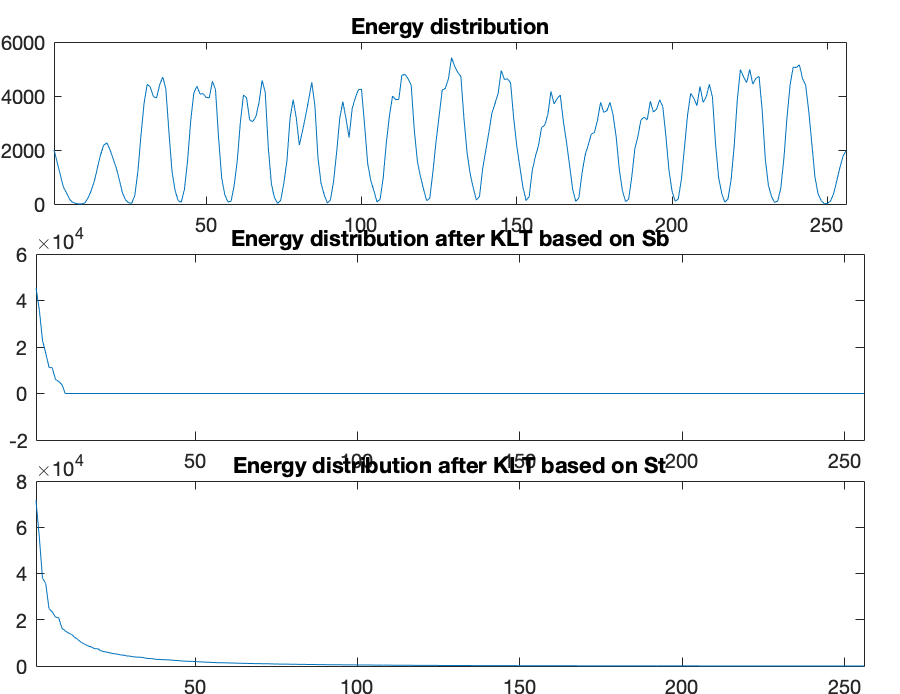
For the KLT based on 







The corresponding 

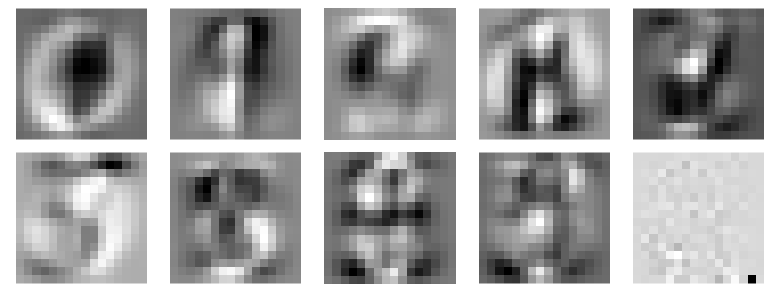
If we only keep the first two or three principal components (corresponding
to the greatest eigenvalues) after the KLT, the dataset can be visualized
as shown in the figure below. The sample points in each of the ten different
classes are color-coded. It can be seen that even when the dimensions are
much reduced from 


